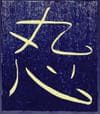Now for a different sort of post format. It’s a little more personal; just musings on a question that I haven’t yet answered, and to which there may be no 'correct' answer.
I feel torn between two different modes of moving. I'm practicing t'ai chi and other internal martial arts principles regularly, with both a focused session to begin most mornings and as my default way of moving through the day. I'm also learning modern dance, with a strong flavoring of ballet principles (and likely soon ballet itself). The demands from each are almost as opposite as they can get. In t'ai chi, a central tenet is to keep the hip joint loose and mobile, often actively rotating, and to move with bent, soft knees. In ballet and modern dance, the hips are kept stationary, with the legs and torso moving around them most of the time, and walking, balancing, and landing from jumps are done with straight legs all the way through or as soon as possible—it’s the ideal baseline to which the dancer returns. T'ai chi gains strength from softness, while ballet creates beautiful form from tension and structure. Ballet emphasizes raising up and standing tall; t'ai chi roots you into the ground.
At this stage, the principles I've learned about movement from conventional strength and conditioning, parkour, and martial arts (including t'ai chi) become interference patterns in my study of modern dance and ballet, causing hitches in my ability to pick up the movements and positions. It's tempting to try to forget the other forms in order to allow new ones in, but I'm more curious to see what happens when I allow seemingly contradictory movement systems to become part of my postures and to shape my unconscious default movement. I wonder what might show up from that fusion. At the very least, I much prefer the idea of expanding my movement vocabulary continuously, and having access to as many words and phrases as possible, to structure my movement to suit the situation at hand, rather than being stuck in one dialect.
